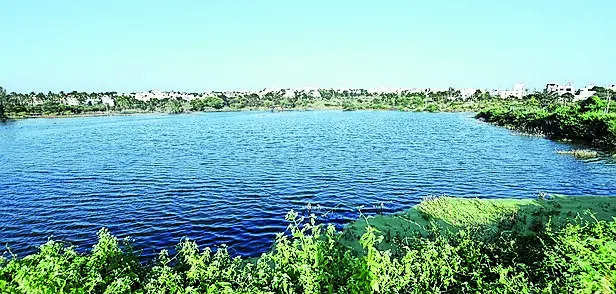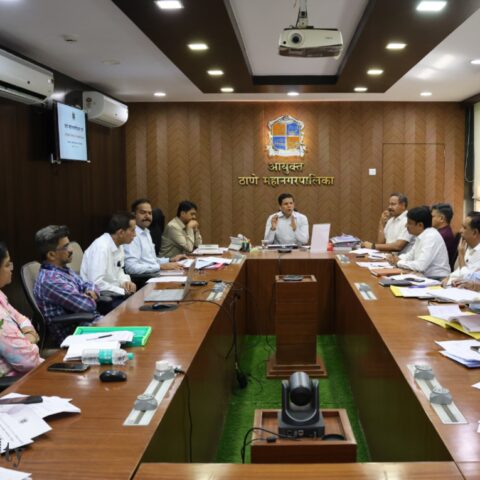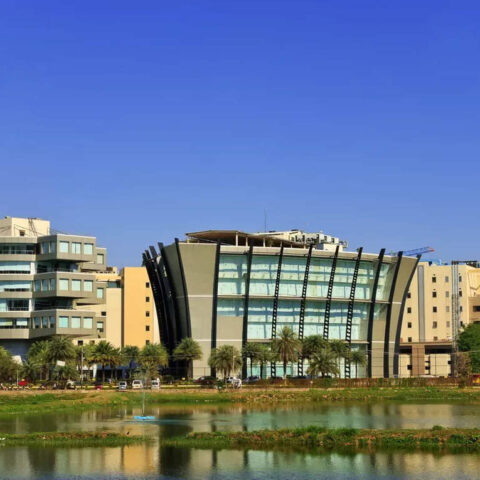
GHAZIABAD: Rapid industrialisation, coupled with a housing and population boom, has come at a cost in the city — its plunging groundwater level.
The city extracted 123% of its total groundwater last year, according to the National Compilation on Dynamic Ground Water Resources of India, 2023 — a study commissioned by the Central Ground Water Board. This was the highest among 75 districts in the state, where the average was way below at 70.8%.
On the points table, Ghaziabad was followed by Noida and Firozabad, where the annual average extraction rate was 104.8% and 104.7%, respectively.
With a population of 48.6 lakh, Ghaziabad is also home to more than 56,000 micro, small, medium and heavy industries. The city, the study showed, extracted 46,191 hectare-metre (HAM) — 1 HAM is equal to 100 lakh litres — of groundwater through last year.
While 2,246.1 HAM was extracted for industrial use, a major chunk — 36,881.8 HAM — was used for irrigation. A total of 7,063.5 HAM was needed for household use, the study revealed. The district has 52,000 hectares of agricultural land.
In comparison, its water table was replenished by 41,675.3 HAM from various sources, including rainfall. But an average of 4,167.5 HAM of water was wasted, which means only 37,507.7 HAM was left for extraction. The city ended up using 23% more than its groundwater.
“Groundwater extraction and its recharge are key to maintaining equilibrium. In Ghaziabad, the Muradnagar block currently falls in a semi-critical zone, and Loni, Modinagar, and city areas are in an overexploited zone,” Ankita Ray, a hydrologist in the groundwater department, said.
The groundwater level is said to be semi-critical when the extraction rate is 70%-90% of the recharge rate. It is called overexploited when extraction exceeds 100% of the recharge.
According to officials in the groundwater department, water table in the city areas depleted by 9.5 metres between 2017 and 2023. While the municipal corporation says these areas have 1,050 borewells, activists peg the number to be much higher.
While data on the number of borewells that have dried up the city over the past five years was not immediately available, activists said the district urgently needed to reduce its dependency on groundwater and tap into surface water — rivers, ponds, etc.— and exacerbate conservation efforts.
“Despite the alarming situation, UP govt is allowing NOCs for the extraction of groundwater to industries in Ghaziabad city, which is a notified area,” city-based environmentalist Sushil Raghav said.
According to Central Ground Water Authority guidelines, industries are not allowed to extract groundwater in notified areas where the water table is down. Extraction is only allowed for drinking purposes here when municipal water is not supplied.
The state govt amended Section 12 of the Ground Water Rule — which prohibits the extraction of groundwater for industrial and commercial purposes — to allow NOCs to MSMEs with an annual turnover of up to Rs 200 crore.
“The CGWB report should serve as a wakeup call for the govt and administration. Instead of awarding NOCs to water-guzzling industries, they should start penalising them,” Raghav said.
Hydrologist Gemini Rao said, “A composite water management index report released by NITI Aayog in 2019 stated that 21 Indian cities, including Ghaziabad, will run out of groundwater in a couple of years, affecting a population of 100 million people. The fresh groundwater data is only pointing to an impending water crisis. The only source from which water needs could be addressed is surface water, the Ganga to be particular. But, so far, only 20 lakh households — less than 50% — in the city have access to the river’s water.”
KP Anand, general manager at GMC’s water works department, said of the 320 MLD of water supplied in the city, 55 MLD is Gangajal, while the remaining water is sourced from borewells.
“Under the Atal Mission for Rejuvenation and Urban Transformation (AMRUT) 2.0, a report on the water situation has been sent to the Centre. We have sought Rs 25,000 crore to revamp the city’s water infrastructure. This will go a long way in tackling the problem in the coming years,” Anand said.









